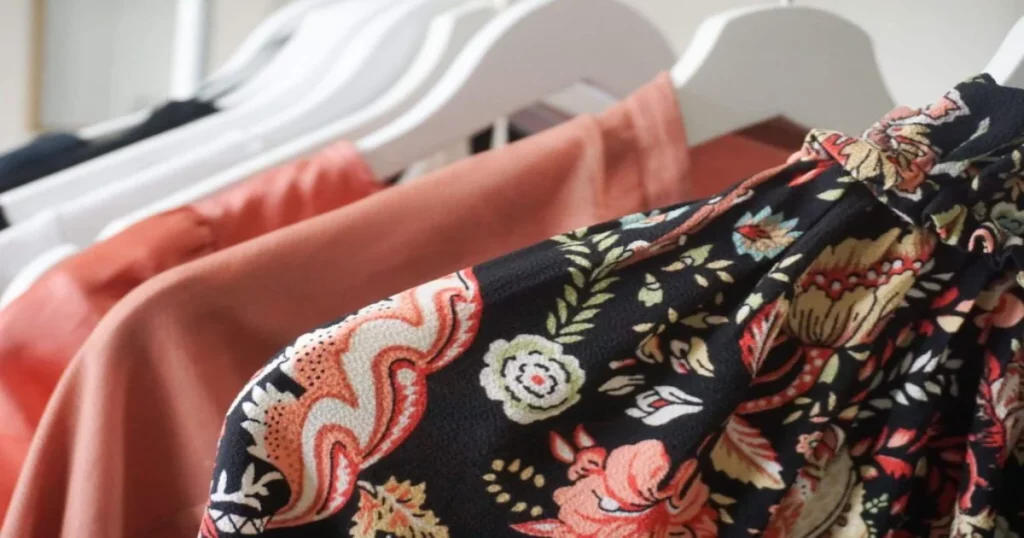No products in the cart.
Blog
Sublimation Clothing: The Future Of Colorful Attire
Sublimation clothing has rapidly gained traction in the fashion industry due to its vibrant, enduring colour prints and unique customization possibilities. This article delves into the intriguing world of sublimation clothing, providing an in-depth review and valuable insights into its production process, advantages, and trending design applications.
Whether you’re a fashion enthusiast or an industry professional seeking to understand the burgeoning trend of sublimation, this comprehensive guide aims to quench your curiosity and equip you with essential knowledge.
What Is Sublimation Printing?
Sublimation printing, also known as dye sublimation, is a popular method for transferring images onto suitable materials. This process involves using heat to bring ink and fabric together.
The first step in sublimation printing involves printing a graphic onto sublimation paper. A heat press then transfers the image from the paper to an item, typically made of polyester or containing a polyester coating.
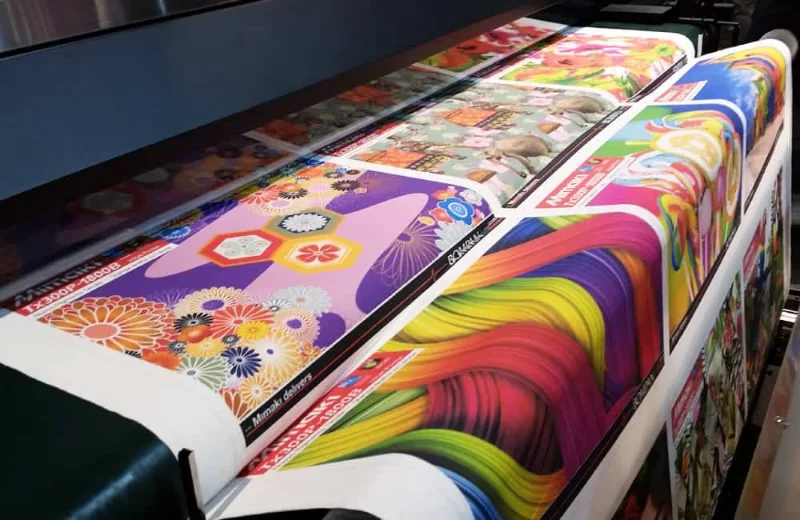
Under high temperatures, the ink transforms into a gas, which permeates the fibres of the item. When the temperature drops, the ink cools, reverts to a solid, and becomes a permanent part of the material.
One of the primary advantages of sublimation printing for clothing is its ability to produce vibrant, high-resolution prints that can’t peel off or fade away. Unlike other printing methods, sublimation allows colours to be extraordinarily brilliant due to the ink’s absorption into the fabric.
This process also enables prints to be more resistant to wear and tear. Since the design becomes ingrained in the fabric, it remains unaffected by washing, ironing, or exposure to the sun.
Benefits Of Sublimation Clothing
Sublimation clothing has many benefits that make it stand out from other printing forms.
Vibrant and Long-Lasting Prints
Sublimation printing uses high-quality dyes that are applied directly to the fabric. This means that prints created using sublimation have vibrant and consistent colours that can last long. Additionally, the print is fully embedded in the fabric, so it will not crack, peel or fade over time like other types of printing.
Customizable Designs
Sublimation printing allows for complex designs to be applied to fabric. This means you can create customized clothing with intricate prints and patterns without worrying about the level of detail needed for a quality product.
Additionally, sublimation printing is capable of creating full-colour images, which gives more freedom when designing apparel.
Breathable and Comfortable Fabric
Sublimation printing is done directly on the fabric, so adding a layer of ink or other material is unnecessary. This means that clothing printed using sublimation will be more comfortable and breathable than those with traditional screen-printed designs. This makes them ideal for athletic wear when comfort is needed.

Wide Range of Applications
Sublimation printing is suitable for a wide range of fabrics and materials. It can be used on t-shirts, hoodies, hats, leggings and other apparel. Sublimation printing is also great for creating unique items such as mugs, coasters or mousepads. Thus making it perfect for promotional items as well as custom clothing.
Sublimation printing provides various benefits, from vibrant and long-lasting prints to customizable designs, making it the perfect choice for custom apparel and promotional products. With its wide range of applications, it is no wonder why this form of printing has become so popular in recent years.
Factors to Consider when Selecting Fabrics for Sublimation Printing
Sublimation printing is a popular digital method offering vibrant, high-resolution prints. However, choosing the right fabric is crucial to achieving optimum results. There are multiple factors to consider when selecting fabrics for sublimation printing.
Fabric Composition
The first factor to consider is fabric composition. Sublimation printing works best on polyester or polyester blend fabrics. This is because polyester’s synthetic nature allows it to fully absorb and lock in the ink during the sublimation process, producing bright and vivid prints.
Fabric Color
Another important factor is the colour of the fabric. The sublimation process often works best on white or light-colored fabrics. The reason for this is twofold: Lighter colours do not interfere with the colour of the print. Darker fabrics have a higher risk of colour bleeding that may affect the print’s clarity.
Fabric Texture
The texture of the fabric is also an important consideration. Smooth and flat textures are ideal for sublimation printing as they allow for even ink transfer. Highly textured fabrics may result in uneven prints due to the irregular surface.
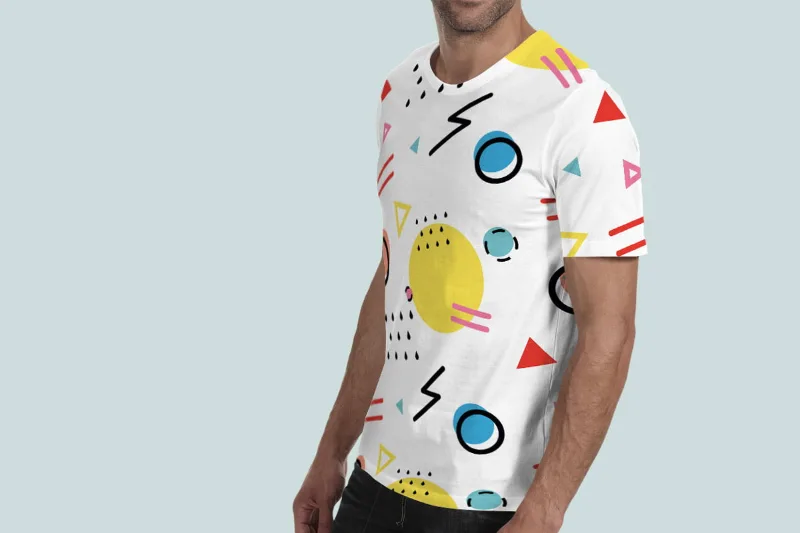
Fabric Weight
The weight of the fabric can impact the quality of the sublimation print. Lighter fabrics often yield better results as they can withstand the high heat necessary for the sublimation process without becoming distorted or damaged.
Recommended Fabric Types for Sublimation Printing
Sublimation printing has a unique process that utilizes heat to transfer dye onto different materials. The nature of this technique allows vivid and long-lasting prints. However, not all fabrics are suitable for sublimation printing, with some yielding better results than others.
Polyester
Polyester is the most suitable fabric for sublimation printing due to its synthetic nature. The high heat from the process directly fuses the dye with the polyester fibres, resulting in vivid, permanent images.
Polyester also maintains its colour vibrancy even after multiple washes, making it a popular choice for garments that require long-lasting prints, such as sports jerseys or promotional clothing.
Poly-Blend Fabrics
Poly-blend fabrics combine the strengths of polyester and other fibres. While not as optimal as pure polyester, they still offer decent results for sublimation printing. The high polyester content in the blend allows for a good quality print, while the other fibres add unique qualities to the material, such as improved comfort or added durability.
Nylon
Nylon is another synthetic material that works well with sublimation printing. The prints on nylon are sharp and vibrant, making it an excellent choice for intricate designs. However, compared to polyester and poly-blend fabrics, nylon is less durable and may not be the best choice for items that require frequent washing.
Spandex
Spandex fabric, known for its exceptional elasticity, is compatible with sublimation printing. While the heat process might reduce the fabric’s stretchiness slightly, the overall flexibility is usually maintained. The result is a stretchable material with a sharp, vibrant print, ideal for sportswear and other elastic garments.
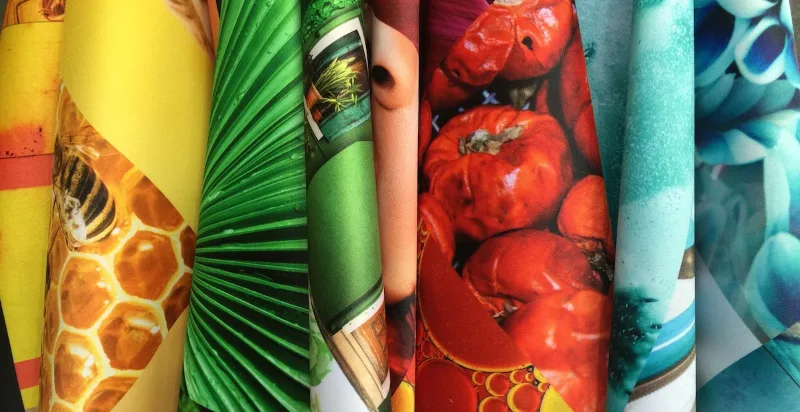
Each fabric offers unique advantages and potential drawbacks. The choice of fabric depends largely on the specific needs of your project, taking into consideration factors such as durability, comfort, and the longevity of the print.
Popular Uses of Sublimation Clothing
With the growing popularity of sublimation printing, there are many ways for consumers to benefit from this printing technique. Here are some of the most popular uses for sublimation clothing:
Sportswear
Sublimation clothing is particularly popular in the world of sportswear. Athletes and sports enthusiasts appreciate these garments for their superior comfort, design versatility, and longevity.
The sublimation process allows for the creation of vibrant, intricate, and completely customizable designs that will not peel, crack, or fade over time. This is crucial in sports, where clothing undergoes intense wear and tear.
Promotional Merchandise
Sublimation printing also plays a significant role in the production of promotional merchandise. It offers businesses an effective method to showcase their brand on clothing items, such as t-shirts, hats, or sweatshirts.
The high-quality, full-colour, all-over print capability of sublimation ensures that the company’s logo and promotional message are clearly visible and maintain their integrity even after repeated washing and wear.
Fashion Industry
In the fashion industry, sublimation clothing has quickly gained prominence for its ability to reproduce intricate and vibrant designs on various fabrics. This technique allows designers to unleash their creativity without being constrained by traditional printing limitations.
The resulting garments are unique, colourful, and durable, making sublimation an increasingly popular choice for fashion-forward brands.
Personalization
Sublimation printing also offers individuals the opportunity to customize their clothing items with ease. Through this process, users can have their favourite photos printed onto apparel or accessories for a unique look.

They can also add text and graphics to further personalize their products. Whether it’s a t-shirt, hoodie, or hat, sublimation printing can help individuals express themselves in their chosen garments.
Accessories
Sublimation printing is not just confined to garments. It can also be used to create unique accessories such as custom phone cases, mugs, and laptop skins that feature the buyer’s favourite designs. This process provides an excellent way for consumers to add a personal touch to everyday items with little effort and at a fraction of the cost.
Home Decor
Sublimation printing can also be used to create stunning visuals for home decor items. This technique provides homeowners with the opportunity to add unique prints to pillows, blankets, curtains, rugs, and other fabric elements. Sublimation-printed designs are highly resistant to fading and have a vibrant, eye-catching look that can instantly refresh any home.
Growing Trends and Innovations in the Sublimation Clothing Industry
With the advancement of technology, several new trends have surfaced in the sublimation clothing industry. There has been a surge in the demand for highly customized apparel and accessories with digital printing techniques such as sublimation printing.
This type of printing is often used to create unique designs that cannot be achieved through traditional methods.
Customization and Personalization
As the appetite for unique and personalized attire grows, the sublimation clothing industry has responded by offering extensive customization options. This trend is driven by advances in digital printing technologies that allow for the production of one-off designs with vibrant colours and intricate patterns.
The process involves transferring a design from a digital format onto fabric using heat, resulting in a print that doesn’t fade, peel, or crack.
Sustainability
Sustainability is another emerging trend in the sublimation clothing industry. Manufacturers are increasingly using eco-friendly materials and processes in response to growing consumer demand for sustainable products.

Sublimation printing, for instance, uses water-based inks, reducing the industry’s environmental footprint. Additionally, because the dye binds directly with the fibres, there’s no need for water to rinse off the excess dye, conserving water resources.
Technological Innovations
Technological innovations are continually propelling the sublimation clothing industry forward. High-speed digital sublimation printers are becoming more affordable and accessible, enabling even small-scale manufacturers to produce high-quality, vivid prints.
Additionally, advancements in software are simplifying the design process, allowing designers to create complex and intricate patterns with ease. These innovations are expected to continue driving growth and diversity in the sublimation clothing industry.
Considerations When Choosing Sublimation Clothing
When selecting clothing items to use for sublimation printing, there are a few considerations you should keep in mind.
Quality of Fabric
When selecting sublimation clothing, the quality of the fabric is a crucial factor to consider. High-quality materials ensure longevity, durability, and comfort. They are less likely to fade or get damaged, ensuring that the sublimation prints remain vibrant and intact even after numerous washes.
Always opt for clothing made from premium fabrics like polyester or poly-blend, as these materials can withstand the high heat used in the sublimation process without compromising the quality of the print.
Print Quality
Another significant aspect to consider is the quality of the print. Sublimation printing allows for vibrant, full-colour, all-over prints. However, the clarity and vibrancy of these prints are heavily dependent on the quality of the printer and the ink used.
Therefore, when choosing sublimation clothing, ensure that the manufacturer uses high-grade sublimation printers and inks to achieve crisp, clear, and radiant prints.
Cost
While it’s essential to prioritize quality, you must also consider the cost. Sublimation clothing can vary significantly in price, depending on the quality of the fabric, the intricacy of the design, and the reputation of the manufacturer.
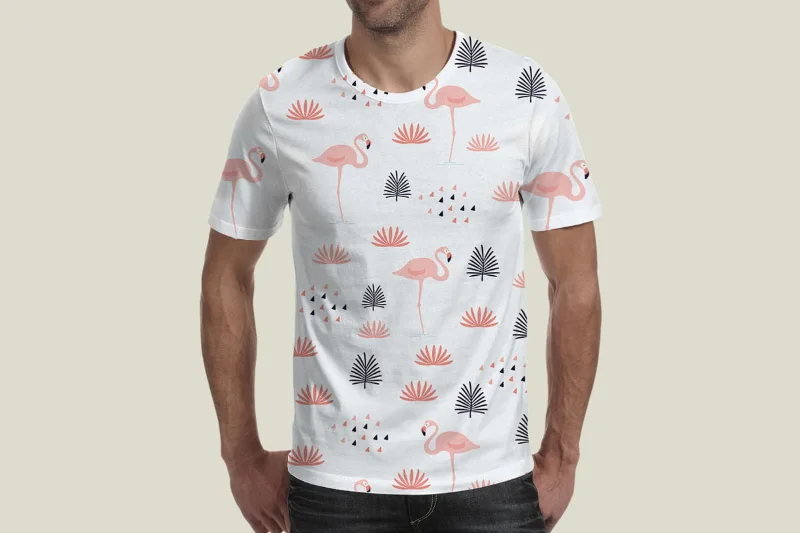
It’s important to compare prices from different suppliers to ensure that you’re getting good value for your money. But remember, cheaper isn’t always better, especially when it comes to the longevity and quality of sublimation clothing.
Care and Maintenance Tips for Sublimation Clothing
With proper care, sublimation clothing can look good and last for a long time. Here are some tips on how to keep your clothes looking their best:
Washing Instructions
Sublimation printed clothing should be washed with utmost care to maintain the vibrancy and longevity of the print. Always opt for a cold water wash and use a mild detergent to prevent fading of the colours.
Avoid using bleach or fabric softeners as they may damage the print. It’s also recommended to turn the clothing inside out before washing to protect the printed design.
Drying Suggestions
While drying sublimation clothing, avoid using a dryer as the high heat can cause the printed design to crack or peel. Instead, air-dry the clothing by laying it flat or hanging it up to keep the shape of the garment intact. If it’s necessary to use a dryer, use the lowest heat setting possible.
Ironing Advice
Ironing sublimation clothing requires careful attention. Always iron the garment inside out to avoid direct contact with the printed design, and use a low heat setting. Consider using a piece of cloth between the iron and the garment to add an extra layer of protection. Avoid steam ironing as the moisture can affect the print.
Storing Tips
When storing sublimation clothing, keep them in a cool, dry place away from sunlight, which can cause the print to fade over time. Fold the clothes neatly to avoid wrinkles and creasing in the printed design.

FAQs
How Does Sublimation Impact The Feel Of The Fabric?
Sublimation significantly enhances the feel of the fabric by making it smoother and softer to the touch. This is due to the ink penetrating deep into the fabric fibres rather than sitting on top, as is the case with traditional printing methods.
Sublimation ensures the print does not crack, peel, or fade, preserving the texture and quality of the fabric over time. Moreover, it allows for bright, vibrant colours that do not compromise the breathability of the material, making sublimation a popular choice for sportswear and other high-performance apparel.
What Types Of Designs Work Best With Sublimation Printing?
Sublimation printing excels with intricate and colourful designs. It’s perfect for patterns that cover an entire piece of clothing, such as all-over print t-shirts or leggings, due to its ability to print edge-to-edge with no limitations on the print area.
Additionally, sublimation is ideal for designs that incorporate a wide range of colours, including gradients, as it can reproduce them with high fidelity. Photographic prints and complex graphics can likewise be reproduced with a high level of detail.
Designs with bright, bold colours are particularly well-suited to sublimation printing, as the technique produces very vibrant results. However, sublimation doesn’t work as well with certain colours on dark fabrics, like black or navy, as the dye is translucent, and the dark fabric can show through.
Sublimation is best suited to synthetic materials such as polyester, which can withstand the high temperatures required for the process.
Can Sublimation Printing Be Done On Dark-Colored Clothing?
Yes. But sublimation printing, while innovative, is best suited for white or light-coloured fabrics.
The dye used in sublimation turns into gas under heat and pressure and then solidifies into the fibres of the fabric, which means it doesn’t sit on top like traditional ink. Hence, the colours are less vibrant on dark fabrics. On lighter shades, the colours appear more vivid and true to their original hue.
Therefore, while it’s technically possible to use sublimation on dark garments, the results are generally not desirable. It’s best to stick to white or light-coloured clothing for the best results.
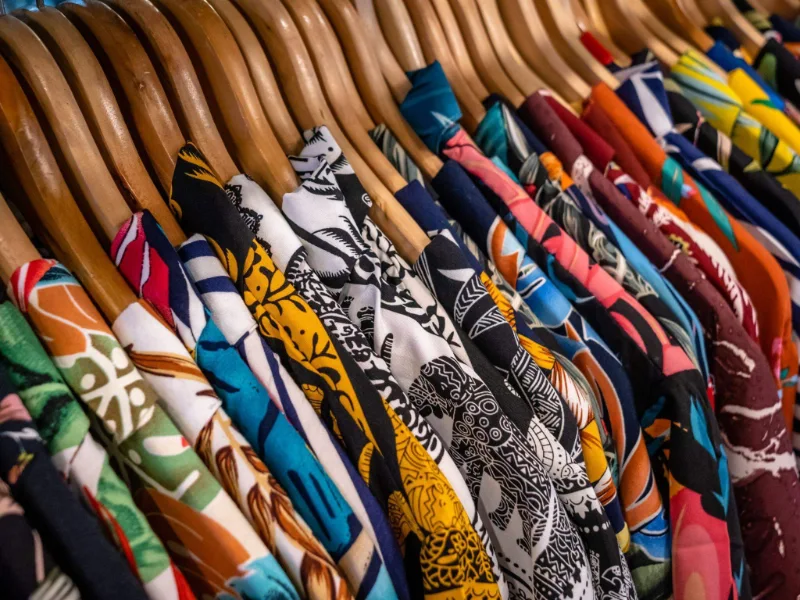
Are There Any Limitations To Sublimation Printing?
Yes. Sublimation printing, while highly versatile, does have certain considerations to keep in mind. However, these do not detract from its overall value.
One such consideration is that sublimation printing works best on white or light-coloured materials with a high polyester content. This is because the heat process converts the solid dye particles into a gas, which then permeates the fibres and re-solidifies them. Though limited to certain fabrics, this process results in vibrant, long-lasting colours that won’t crack or peel.
Another factor is cost: sublimation printers, inks, and specially-coated items can command a price premium. However, the superior results and durability achieved through sublimation printing often make it a worthwhile investment.
The heat required for sublimation printing necessitates careful handling to avoid any potential burns. But with appropriate safety measures, it’s a manageable challenge.
So, while there exist certain needs and precautions, the quality of printing output and wide range of applications make sublimation printing a highly desirable method in the textile and promotional products industries.
Is Sublimation Printing Permanent On Clothing?
No, sublimation printing is not permanent on clothing. While it creates highly durable prints that resist fading better than most other techniques, they aren’t completely permanent. Sublimation prints can gradually fade over time, especially when the garment is frequently exposed to harsh washing cycles and direct sunlight.
The vibrancy of the print may diminish with wear and tear, and the garment material also plays a pivotal role in the lifespan of the print. Hence, while sublimation prints are long-lasting, they are not entirely permanent.
Does Sublimation Printing Fade Over Time?
Yes, sublimation printing can indeed fade over time. Although the sublimation process itself embeds the ink within the fabric, external factors such as prolonged exposure to sunlight, frequent washings at high temperatures, or harsh detergents can lead to gradual fading.
Essentially, while sublimation printing provides a long-lasting and vibrant print, it is not entirely immune to wear and tear, and its lifespan will depend on how the printed items are maintained and used.
Conclusion
Sublimation clothing represents a remarkable innovation in the fashion and sports industry. This method of printing allows for vibrant, long-lasting designs that won’t fade or crack over time, making it an ideal choice for custom team uniforms or fashion-forward apparel.
Whether you’re an athlete seeking performance-enhancing gear or a fashion enthusiast looking for unique, durable, and comfortable pieces, sublimation clothing is worth considering. This article provides a comprehensive overview, but the real proof is in experiencing the quality and convenience of sublimation clothing for yourself.

